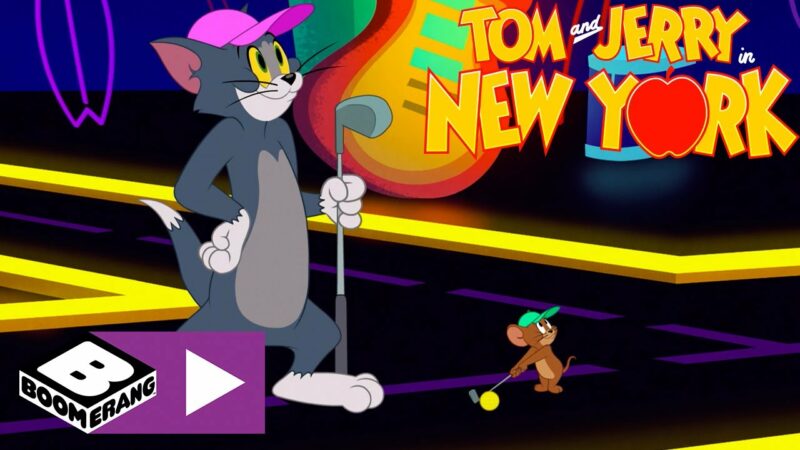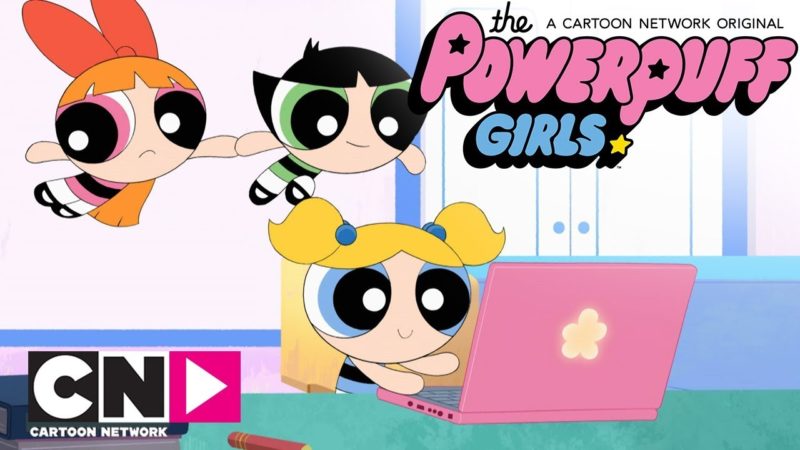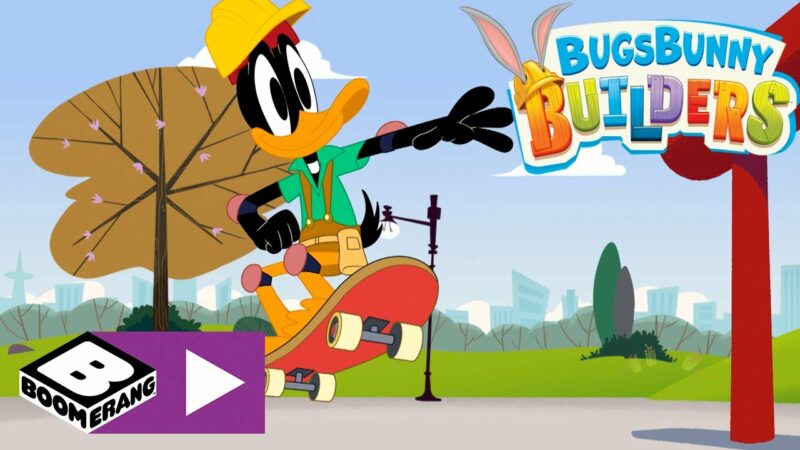Taron and the Magic Pot - the 1985 animated film
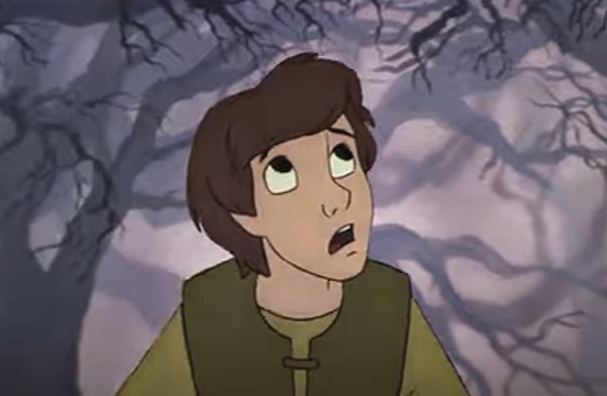
Taron and the magic pot (in the American original: The Black Cauldron) is a 1985 animated film on the fantasy genre, produced by Walt Disney Productions together with Silver Screen Partners II and distributed by Walt Disney Pictures.
The film is Disney's 25th animated feature film, and is loosely based on the first two books by The Chronicles of Prydain (The Chronicles of Prydain) by Lloyd Alexander, a series of five novels which are, in turn, based on Welsh mythology.
Set in the mythical land of Prydain during the High Middle Ages, the film centers on an evil emperor known as King Cornelius (The Horned King), who hopes to secure an ancient magical cauldron that will help him in his desire to conquer the world.
He is opposed by the young swineherd Taron, the young princess Ailin, the harp-playing bard Sospirello (Fflewddur Fflam) and a friendly wild creature named Gurghi who will try to destroy the magic pot, to prevent King Cornelius (The Horned King) to rule the world.
The film is directed by Ted Berman and Richard Rich, who had directed the previous Disney animated film Red and Toby are enemies (The Fox and the Hound) in 1981, and was the first Disney animated film to be recorded in Dolby Stereo.

To invest in the growing popularity of fantasy films during the early 80s (such as "The Neverending Story" and "Legend"), Disney acquired the rights to the books in 1973 with production commencing in 1980, scheduled for Christmas 1984. During production, it underwent a severe editing process, particularly due to its climatic sequence, which proved creepy for the children.
The new president of Walt Disney Studios Jeffrey Katzenberg, ordered to cut those scenes, fearing that they would terrify the children, which caused the delay of the release of the film, postponed to 1985. It features the original voices of Grant Bardsley, Susan Sheridan, Freddie Jones, Nigel Hawthorne, Arthur Malet, John Byner, Phil Fondacaro and John Hurt.
It was the first Disney animated film to receive a PG rating and the first Disney animated film to feature computer-generated imagery. The film was released theatrically through Buena Vista Distribution on July 24, 1985 to mixed reviews, with critics voicing disapproval of its dark nature and disjointed writing, though the animation, soundtrack and voice acting were praised. .
As the most expensive animated film ever made at the time, it was a box office flop, grossing just $ 21 million against a $ 44 million budget, putting the future of Disney's animation department at risk. Due to its commercial failure, Disney did not release the film on home video until 1998.
History
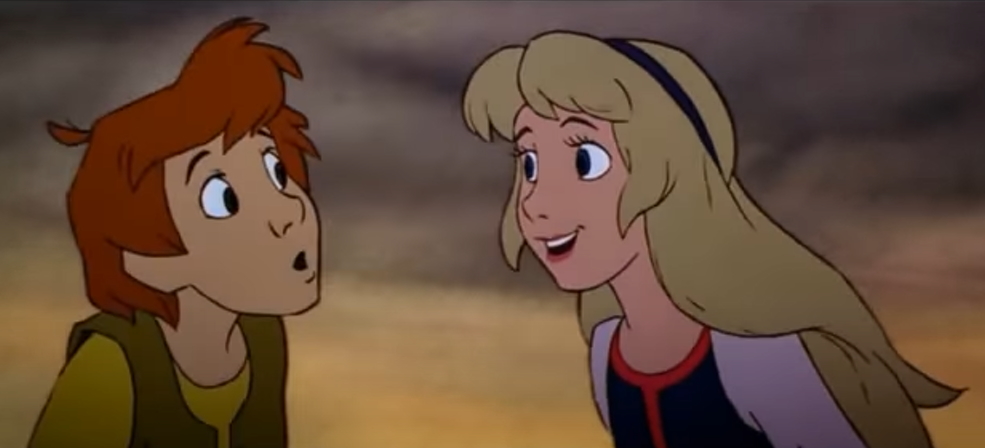


In the land of Prydain, Taron, a teenager and "assistant pig farmer" on the small farm of Caer Dallben, home of Dallben the Enchanter, dreams of becoming a famous warrior. Dallben discovers that the evil King Cornelius (The Horned King) is in search of a mystical relic known as the Magic Pot, which can create an invincible army of undead warriors: The Magic Pot ”.
Dallben fears that King Cornelius (The Horned King) may use his pig, Ewy, who has oracular powers, to locate the cauldron. Dallben orders Taron to rescue Ewy; Unfortunately, Taron's insane daydream causes Ewy to be captured by the Gwythaints, the dragon-like creatures of King Cornelius (The Horned King).
Taron follows them to the castle of King Cornelius (The Horned King) and meets the annoying dog-like creature, Gurghi, who wants to be his friend. Frustrated by Gurghi's antics and cowardice, Taron leaves him. Taron sneaks into the castle and helps Ewy escape, but is captured and thrown into the prison.
Another prisoner named Princess Ailin frees him as he tries to escape. In the catacombs below the castle, Taron and Ailin discover the ancient burial chamber of a king. Taron arms himself with the king's magic sword, which allows him to fight effectively against the servants of King Cornelius (The Horned King), thus fulfilling his dream.
Together with a third prisoner, middle-aged bard comedian Sospirello (Fflewddur Fflam), they flee the castle and are found by Gurghi. Upon learning that Taron has escaped, King Cornelius (The Horned King) orders his goblin and chief henchman, Creeper, to send the Gwythaints to follow and capture Taron along with his friends.
Following in the footsteps of Ewy, the four companions stumble upon the subterranean realm of the Fairy People who have Ewy under their protection. When the kind King Fingal (Eidilleg) reveals the location of the cauldron, Taron decides to destroy it.



Ailin, Gurghi, and Sospirello (Fflewddur Fflam) agree to join him and Fingal's hateful right-hand man (Eidilleg), Doli, is tasked with guiding them into the Morva Marshes as the Fairfolk accompanies Ewy to Caer Dallben. In Morva, they discover that the cauldron is held by three witches - the cunning Orchina, the greedy Orvina and the more benevolent Orcona (who falls in love with Sospirello at first sight).
Orchina agrees to trade the cauldron for Taron's sword and reluctantly agrees, knowing it will cost him a chance for heroism. Before vanishing, the witches reveal that the pot is indestructible and its power can only be broken when someone voluntarily climbs into it, which will kill them.
Doli angrily abandons the group. Though Taron feels foolish for trading the sword for nothing, his companions show their faith in him; and Ailin and Taron almost kiss while Sospirello and Gurghi look on happily; until Gurghi spoils the moment after giving Sospirello a kiss on the cheek.



Suddenly they are found by the servants of King Cornelius (The Horned King) who had followed them. Gurghi escapes before they take the pot back to the castle with the three companions. King Cornelius (The Horned King) uses the magic pot to resurrect the dead and his cauldron-born army begins pouring out into the world.
Gurghi, deciding not to abandon his friends this time, sneaks into the castle and saves them. Taron decides to jump into the pot to save everyone, but Gurghi stops him and jumps inside, destroying the pot and killing himself.
When King Cornelius (The Horned King) sees Taron, he blames him, saying that Taron interfered for the last time, and throws the young man towards the cauldron. But the cauldron is out of control and consumes King Cornelius (The Horned King) in a tunnel of fire, killing him and destroying the castle, using all his powers forever, while the companions escape.
The three witches come to retrieve the now inert Magic Pot. However, Taron has finally won Gurghi's true friendship, as he greets him as a hero and asks them to revive his friend in exchange for the cauldron, choosing to give up his magic sword for good.
After listening to Sospirello's (Fflewddur Fflam) demanding remarks to demonstrate their powers, the reluctant witches honor the request, returning Gurghi to them. At first, Gurghi appears to be dead but rises again to everyone's great joy. After reuniting, she pushes Taron and Ailin to kiss each other. The four friends then return home to Caer Dallben where Dallben and Doli watch them in a vision created by Ewy, and Dallben finally praises Taron for his heroism.
Characters



tharon
Princess Ailin
Dallben
Sigh (Fflewddur Fflam)
king Fingal (Eidilleg)
Gurghi and Doli
Creeper
King Cornelius (The Horned King)
Orchina
Orcona
Orvina
the henchmen of King Cornelius
Production
Walt Disney Productions bought the rights to Lloyd Alexander's five-volume series in 1971, and pre-production work began in 1973, when the film rights to Alexander's books were finally obtained. According to Ollie Johnston, it was he and Frank Thomas who convinced the studio to produce the film and that, if done correctly, it would be "as good as Snow White".
Due to the numerous storylines and with over thirty characters in the original series, several artists and animators of the story worked on the development of the film in the 70s, when its release was originally scheduled for 1980. Veteran artist Mel Shaw made some preparatory pastel sketches, which future Disney president and CEO Ron W. Miller considered too advanced and complex for the animators.
Therefore, in August 1978 the studio postponed the release date to Christmas 1984 due to their inability to animate realistic human characters; its original release date would later be replaced by Red and Toby are enemies (The Fox and the Hound). During his development limbo, one of those writers was veteran storyboard artist Vance Gerry, who was chosen to create storyboards that outlined plot, action, and locations.
After creating the three main characters, Gerry adapted King Cornelius (The Horned King) to a pot-bellied Viking who had a red beard, a fiery temper and wore a steel helmet with two large horns. Desiring an experienced British screenwriter to write the screenplay, the studio hired Rosemary Anne Sisson on the project.
The first director attached to the project was animator John Musker after he was offered the job by head of production Tom Wilhite. As a director, Musker was tasked with expanding several sequences in the first act, but they ended up being deemed too comical.
When the production of Red and Toby are enemies (The Fox and the Hound) ended, several feature-length animation directors Art Stevens, Richard Rich, Ted Berman and Dave Michener were involved in Taron and the Magic Pot.
When Miller decided that too many people were involved, he decided that Stevens was not appropriate to oversee the project, so he contacted Joe Hale, who was a longtime layout artist at Disney Studios, to serve as a producer.
With Hale as the producer, the actual production of Taron and the magic pot officially began in 1980. He eliminated character illustrations presented by Tim Burton and the directors of Red and Toby are enemies (The Fox and the Hound) Richard Rich and Ted Berman, wanted a Sleeping Beauty approach.
They took Milt Kahldal on retreat to create character designs for Taron, Ailin, Sospirello (Fflewddur Fflam) and the other main characters. He and the story team (including two story artists David Jonas and Al Wilson who Hale brought to the project) reviewed the film, summarizing the story of the first two books and making some notable changes, which led to Sisson's departure. he had creative differences with Hale and the directors.
Animators John Musker and Ron Clements, also citing creative differences, were removed from the project and began development of The Great Mouse Detective. Dissatisfied with Vance Gerry's concept for King Cornelius (The Horned King), Hale transformed King Cornelius (The Horned King) into a slim creature who wore a hood and wore a ghostly presence with a shadowy face and bright red eyes, the his role expanded into a composite villain of several characters from the books.
Taron and Ailin eventually acquired elements of the past designs and costumes of previous Disney characters, most notably the latter, which was designed to resemble Princess Aurora.
Technical data and credits
Original title The Black Cauldron
Original language English
Country of Production United States of America
Year 1985
Duration 80 min
Relationship 2,35:1
Gender animation, fantastic, adventure
Regia Ted Berman and Richard Rich
Subject Lloyd Alexander
Film script David Jonas, Vance Gerry, Ted Berman, Richard Rich, Al Wilson, Roy Morita, Peter Young, Art Stevens, Joe Hale
Producer Joe Hale
Executive producer Ron W. Miller
Production house Walt Disney Productions, Silver Screen Partners II
Distribution in Italian UIP
Editor Armetta Jackson-Hdamlett, James Koford, James Melton
Special effects Barry Cook, Mark Dindal, Don Paul, Jeff Howard, Glenn Chaika, Patricia Peraza, Scott Santoro, Ted Kierscey, Kelvin Yasuda, Bruce Woodside, Kimberly Knowlton, Allen Gonzales
Music Elmer Bernstein
scenography Don Griffith, Guy Vasilovich, Glenn V. Vilppu, Dan Hansen, William Frake III
Art director Mike Hodgson, Jim Coleman
character design Andreas Deja, David Jonas, Glen Keane, Phil Nibbelink, Michael G. Ploog, Al Wilson
Entertainers Andreas Deja, Dale Bear, Ron Husband, Shawn Keller, Jay Jackson, Barry Temple, Doug Krohn, Tom Ferriter, David Block, David Pacheco, George Scribner, Hendel Butoy, Mark Henn, Mike Gabriel, Phil Nibbelink, Phillip Young, Steven E . Gordon, Jesse Cosio, Ruben Procopio, Viki Anderson, Sandra Borgmeyer, Ruben Aquino, Cyndee Whitney, Charlie Downs, Terry Harrison
Wallpapers John Emerson, Lisa Keene, Tia W. Kratter, Andrew Phillipson, Brian Sebern, Donald Towns
Original voice actors
Grant Bardsley: Taron
Susan Sheridan Ailin
Freddie Jones: Dallben
John BynerGurghi, Doli
John Hurt: King Cornelius
Nigel Hawthorne: Sigh
Phil Fondacaro: Rospus
Arthur Malet: King Fingal
Eda Reiss Merin: Orchina
Billie Hayes: Orcona
Adele Malis-Morey: Orvina
Brandon Call: Fairy 1
Gregory Levinson: Pixie 2
Lindsay Rich: Fairy
John Huston: Narrator
Italian voice actors
Giorgio Borghetti: Taron
Loredana Nicosia: Ailin
Giuseppe Rinaldi: Dallben
Marco Bresciani: Gurghi
Paul Poiret: King Cornelius
Carlo Reali: Rospus
Gianni Williams: Sigh
Arturo Dominici: King Fingal
Gigi Angelillo: Doli
Gabriella Genta: Orchestra
Paola Giannetti: Orcona
Germana Dominici: Orvina
Marco Guadagno: Goblin 1
Mauro Gravina: Goblin 2
Giuppy Izzo: Follettina
Paolo Buglioni: Guards of King Cornelius
Source:https://en.wikipedia.org/

